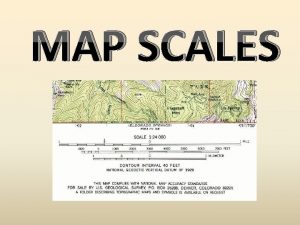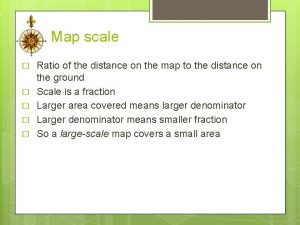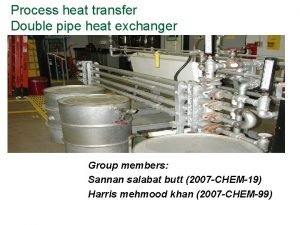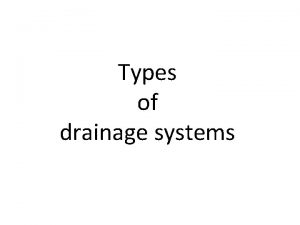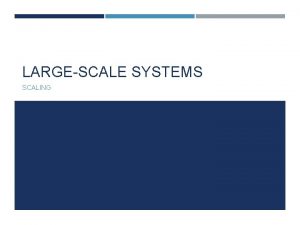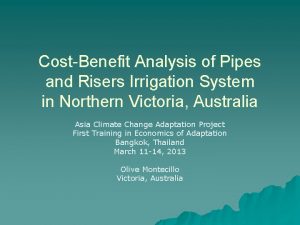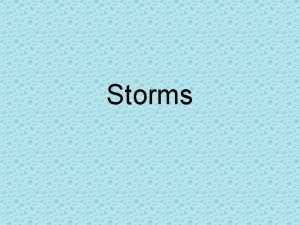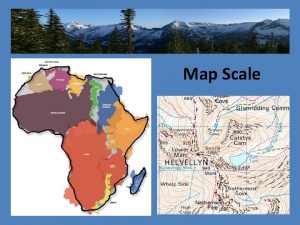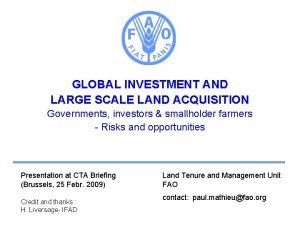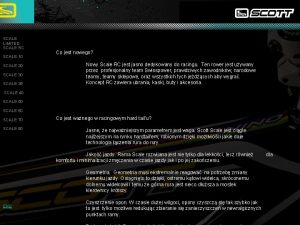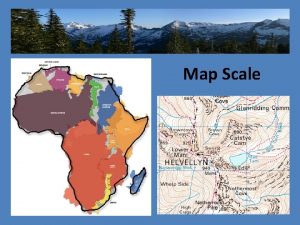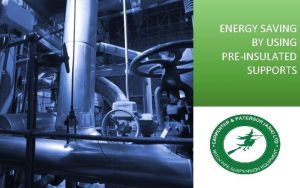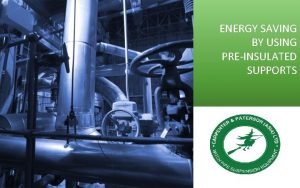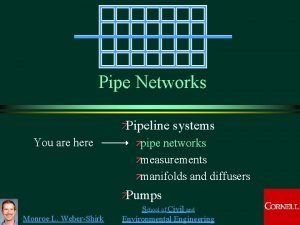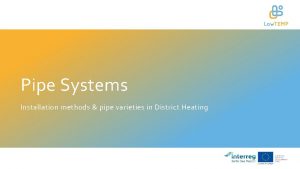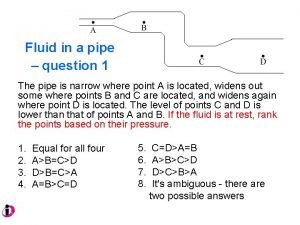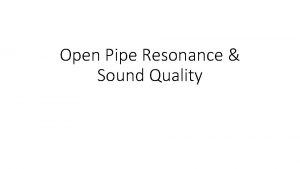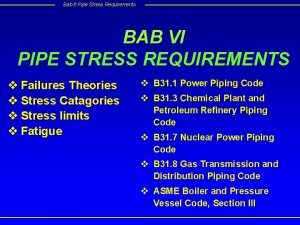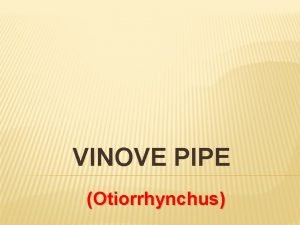The right preinsulated pipe systems for large scale


















- Slides: 18

The right pre-insulated pipe systems for large scale solar district heating networks 3 rd international conference on Smart Energy Systems and 4 GDH Peter Jorsal 12 September 2017

The LOGSTOR Group & global presence Headquarters in Denmark 1, 500 employees Annual turnover > 250 MEUR Owner: Triton Fund III

Large scale solar heating networks

Large scale solar heating networks • Large scale solar heating networks are already today playing an important role in Denmark • This is expected to spread to Europe in the future • This presentation is not about research and development of a new system • It is about learning from the history when moving ahead

Experience with solar heating networks • More than 20 years of experience with large scale solar district heating networks • The first designs was based on the know how from traditional district heating projects • Products • Design of the system • The design assumptions were insufficient in respect to • Temperature cycles during service life Number of temperature cycles in a solar network is up till 40 times more than in a conventional district heating system

Experience with solar heating networks • Energy companies has experienced damages like • Leaking joints • Resulting in corroding steel • Fatigue failure on the steel • Immediate leak that will spread in the pre insulated system • Corroding valve connections at the introduction to the solar panels Wrong design assumptions has lead to damages in the network

Learning from the experience • We have today much better understanding of the design criteria's • Temperature in the system over the year • Number of temperature cycles over service life • The right products that will withstand the loads from the temperature cycles The expensive experience has lead to better knowledge and better design assumption

Design criterias, Temperature cycles over service life • Standard district heating system • The system is designed for a minimum service life of 30 years with the number of full temperature cycles depending on type of network • Transmission pipelines cycles 100 temperature • Distribution pipelines 250 temperature cycles • House connections cycles A full temperature cycle 1000 temperature • Large scale solar district heating system • Number of full temperature cycles over 30 years is • 3500 – 10950 1 is time 2 is the full temperature cycle Crucial to work with the right design parameters • Depending on the system

Example on design with different design parameters • Standard district heating system • Max. temperature 110 °C • 250 full temperature cycles over service life • Solar district heating system, type 1 • Max. temperature 110 °C • 3500 full temperature cycles over service life • Solar district heating system, type 2 • Temperature between 10 – 110 °C • 1 full temperature cycle per day • Shortly up till 150 °C 5 hours twice a year • Full temperature cycles over service life is 10950 • General assumptions • Installation temperature 10°C • Soil cover 0, 6 m • Pressure 6 bar Comparison of 3 different design criteria's During winter time temperature in the pipe system can go down to -15 °C

Example on design with different design parameters Elbow loaded 50% District heating 250 temperature cycles Elbow fully loaded Solar heating 3500 temperature cycles Elbow fully loaded Solar heating 10950 temperature cycles

Empty conductor pipe arround the standpipe

Standpipe placed centric at the time of installation Stand pipe Main pipe Standpipe placed centric in the empty conductor pipe Movement must be calculated at peak temperature During winter time temperature in the pipe system can go down to -15 °C

Component requirements • Welded joints is recommended • All standpipes to the solar panels must be placed in empty conductor pipes • Branches and bends must be preinsulated • It is recommended that change in direction is done with 90° bends • No twin pipes when number of temperature cycles is more than in a normal district heating network • Active Monitoring system The right components are essential for a long life time

Component requirements • Standpipes designed for the specific project • Match the exact position of the solar panels • Indoor manufacturing • By companies specialized for this work • Secures optimum conditions for high quality Standpipes prepared indoor at factory site is an opportunity

Design requirements • A detailed static calculation must be done on all bends based on the number of full load temperature cycles • The maximum pipe length section is calculated based on the “free space” in the empty conductor pipe around the standpipes • During winter time temperature in the pipe system can go down to -10 °C till -20 °C • Use foam pads at change of directions • These design requirements apply in the network between the solar panels and the heat exchanger before the standard district heating network Static calculations based on number of temperature cycles

Focus on total cost of ownership (TCO) • Essential for a long life time is the right choice of products and the right system design • Essential for the lowest TCO is the balance between the investment in pipe system and installation and the heat loss of the system over life time • Lowest heat loss is achieved on systems with axial conti pipes with a diffusion barrier and low lambda value • The diffusion barrier will secure the low heat loss in the entire life time

Focus on total cost of ownership (TCO)

The right pre-insulated pipe systems for large scale solar district heating networks 3 rd international conference on Smart Energy Systems and 4 GDH Peter Jorsal 12 September 2017
 Right product right place right time right price
Right product right place right time right price Right time right place right quantity right quality
Right time right place right quantity right quality Small scale map
Small scale map Direct statement scale example
Direct statement scale example Large scale map
Large scale map Introduction to topographic maps
Introduction to topographic maps Geography skills handbook
Geography skills handbook Double pipe heat exchanger formula
Double pipe heat exchanger formula Partially ventilated single stack system
Partially ventilated single stack system Large scale systems
Large scale systems The right man on the right place at the right time
The right man on the right place at the right time Pipe and riser irrigation systems
Pipe and riser irrigation systems The anatomy of a large scale hypertextual web search engine
The anatomy of a large scale hypertextual web search engine Oogoogle translate
Oogoogle translate Large scale rotating air mass
Large scale rotating air mass Small scale fermentation
Small scale fermentation Large scale chart definition
Large scale chart definition Ulsi (ultra large scale integration)
Ulsi (ultra large scale integration) Large scale global investment
Large scale global investment



